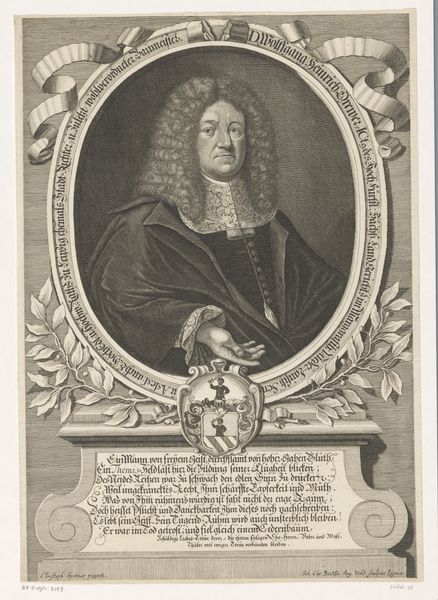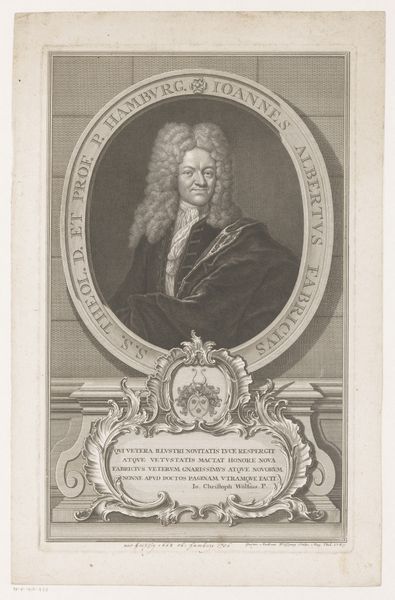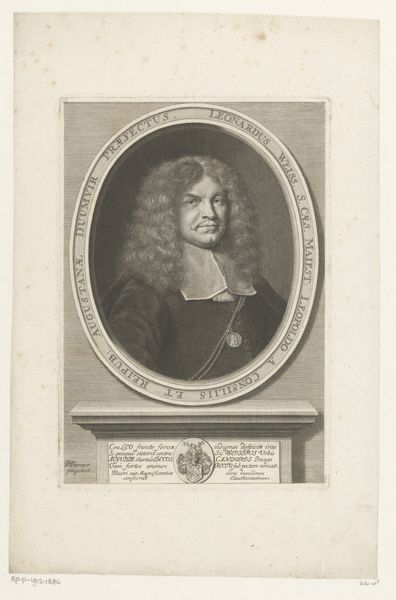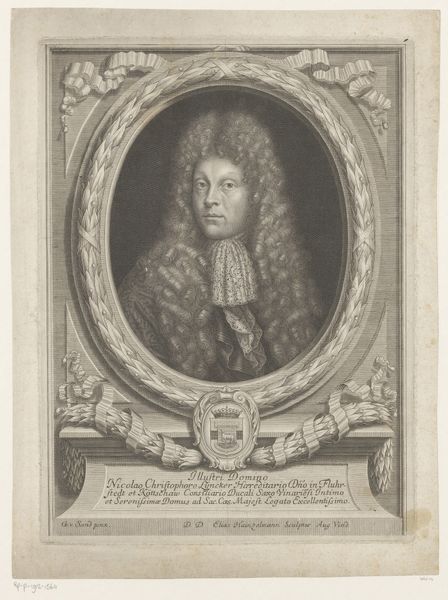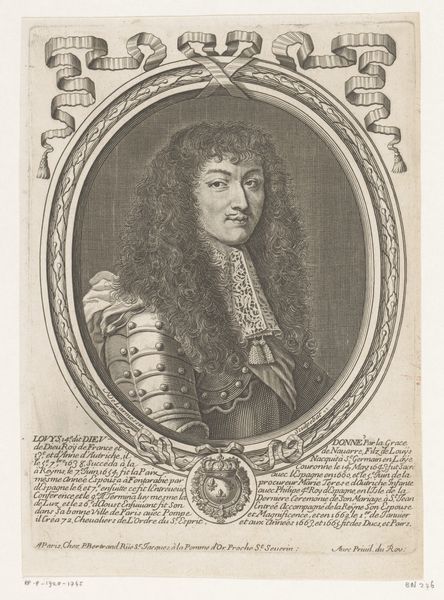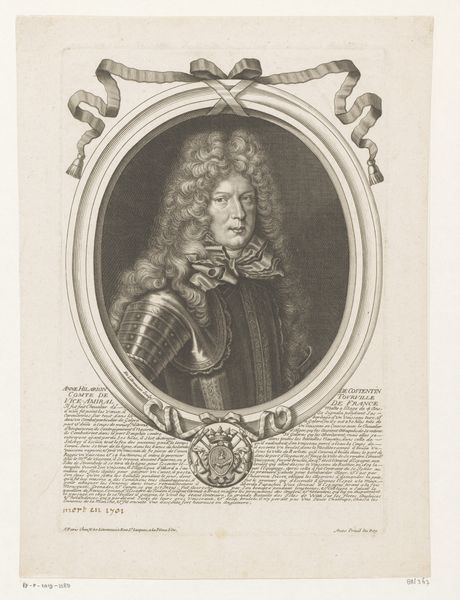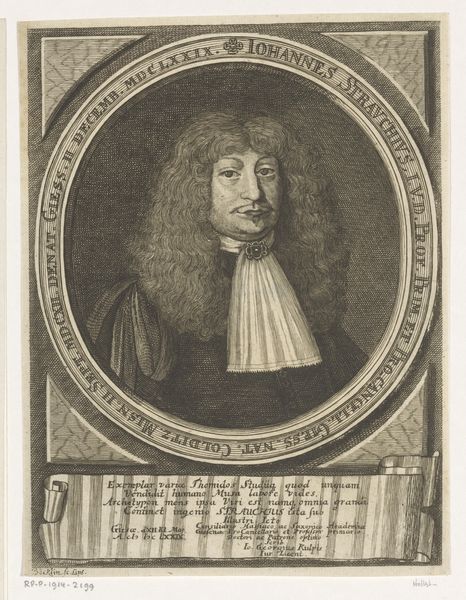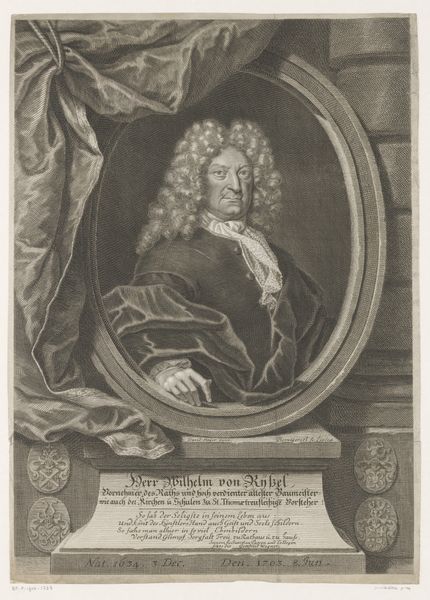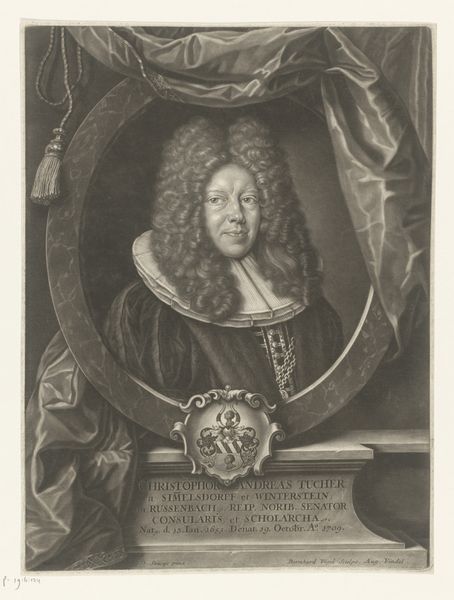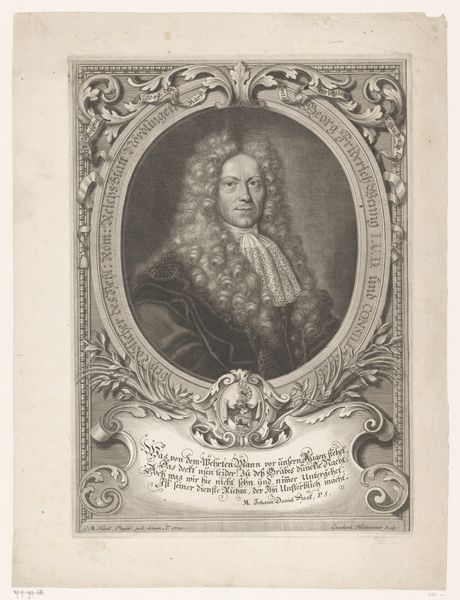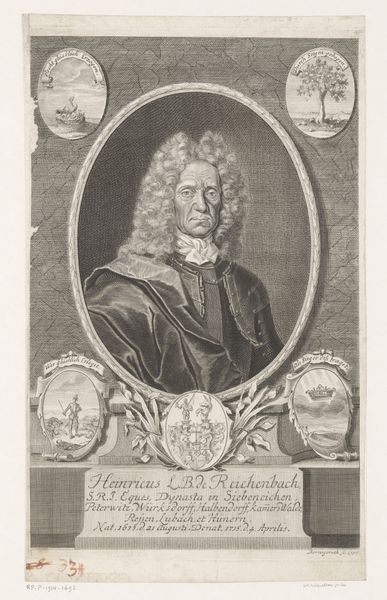
print, engraving
#
portrait
#
baroque
# print
#
old engraving style
#
history-painting
#
engraving
Dimensions: height 300 mm, width 222 mm
Copyright: Rijks Museum: Open Domain
Curator: Here we have a print entitled "Portret van Gregor Luppe," created in 1693. The technique used to realize this image is engraving. Editor: It has an immediately imposing presence. I notice how intricately layered the textures are—from the sitter's flamboyant wig and delicate lace collar to the embellished borders framing the portrait. There's such dense, almost tactile visual information. Curator: Indeed, it's quite baroque in its ornate complexity! This kind of formal portraiture held particular symbolic weight. Consider the inclusion of heraldic devices. Notice the coats of arms which act as emblems representing family lineage and status; to be rendered and circulated as a print amplifies prestige, doesn't it? Editor: Absolutely. And engraving would have been quite the labor-intensive process! The meticulous detail indicates considerable time investment—suggesting both the sitter's wealth and the value placed on image production and distribution, wouldn't you say? The engraver is also communicating something through the labor invested. Curator: Definitely. Furthermore, let’s turn our gaze to those figures flanking the portrait, I can detect the angels bearing wreaths—motifs classically linked to triumph and virtue, creating a rich visual language. Editor: Which is juxtaposed with a distinct, grounded realism in the treatment of the face. See those lines, creases? It shows age, experience. How striking. The print becomes this record of a lived life but transformed into a statement object that reinforces an economic status. Curator: Precisely. It speaks to the complexities of self-fashioning and public image. Editor: It is through careful manipulation of available materials and technologies of the period that status is made durable, visible, reproducible. Curator: What remains memorable about this piece to me is its symbolic depth, how deeply it reaches into history through its emblematic imagery and formal composition. Editor: For me, it’s this tangible connection to the labor of making. Someone, somewhere, spent a long time crafting this plate, resulting in a testament to both status and artistry.
Comments
No comments
Be the first to comment and join the conversation on the ultimate creative platform.

